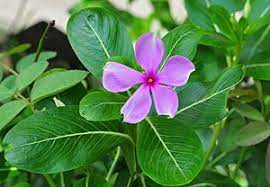SADAFULI

listen about me
Catharanthus roseus (L.) G. Don.
Classification:
Scientific Classification
Kingdom: Plantae
Division: Angiospermae
Class: Gamopetalae
Subclass: Gamopetalae
Series: Bicarpelatae
Order: Gentianales
Family: Apocynaceae
Genus: Catharanthus
Species: roseus
Scientific Name: Catharanthus roseus (L.) G. Don.
Common Name-
English: Periwinkle, Madagascar periwinkle, Rosy periwinkle, Vinca
Hindi: Sadabahar सदाबहार
Kannada: ಸದಾಪುಷ್ಪ Sadaapushpa, ನಿತ್ಯಪುಷ್ಪ Nityapushpa
Malayalam: Shavam Naari
Marathi: सदाफूली Sadaphuli
Bengali: নযনতাৰা Nayantara
Assamese: নয়ন তৰা Nayan Tora
Telugu: బిళ్ళ గన్నేరు Billa Ganneru
Mizo:Kumtluang
Nepali: बाह्रमासे फूल Baahramaase Phool
Description:
Habit & Habitat: Periwinkle is a happy-go-lucky small subshrub. It grows in adverse conditions, rain, heat, dust. It can be quite often seen growing out of cervices of walls. It is
an evergreen subshrub or herbaceous plant growing 1 m tall.
Leaves: The leaves are oval to oblong, 2.5–9 cm long and 1–3.5 cm broad, glossy green, hairless, with a pale midrib and a short leaf-stalk 1–1.8 cm long; they are arranged in
opposite pairs.
Flowers: The flowers are white to dark pink with a darker red centre, with a basal tube 2.5–3 cm long and a flower 2–5 cm diameter with five petal-like lobes.
Fruits: The fruit is a pair of follicles 2–4 cm long and 3 mm broad. Lots of cultivars have been developed with various colors, from red to white.
Uses: In Ayurveda the extracts of its roots and shoots, though poisonous, is used against several diseases. In traditional Chinese medicine, extracts from it have been used against
numerous diseases, including diabetes, malaria, and Hodgkins lymphoma.
Many of the vinca alkaloids were first isolated from Catharanthus roseus. The substances vinblastine
and vincristine extracted from the plant are used in the treatment of leukemia and Hodgkins lymphoma.
